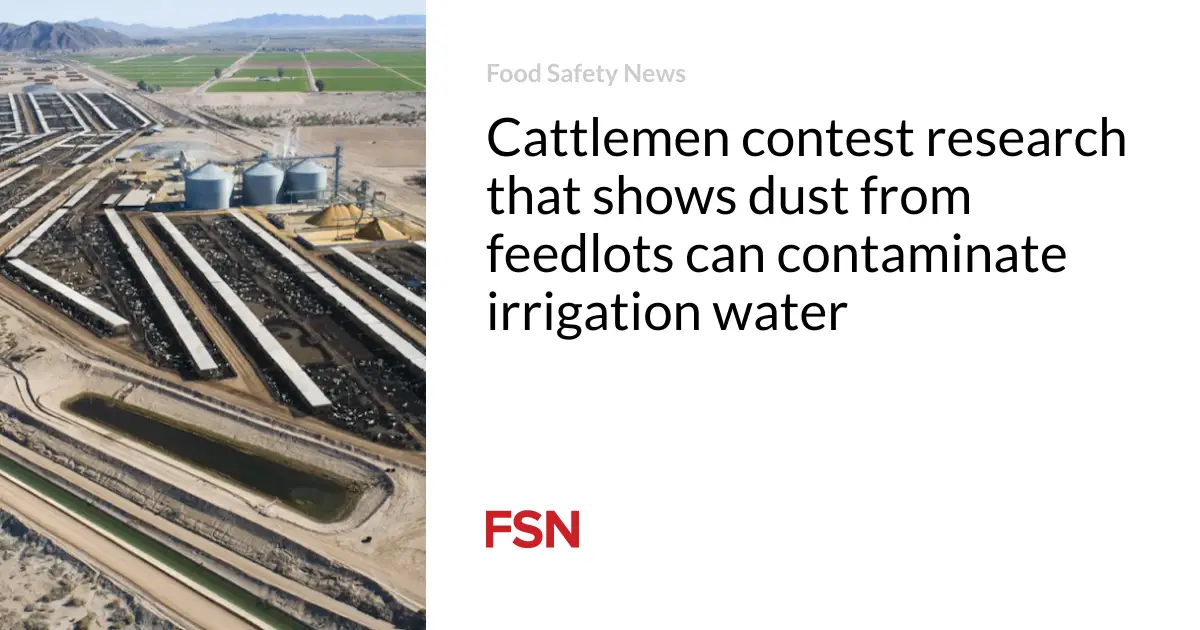
A national trade organization representing beef producers is pushing back against a research project that has found that dust from feedlots can contaminate produce growing fields and irrigation water.
The National Cattlemen’s Beef Association posted a statement saying that more research is needed.
The pushback came after the Food and Drug Association reported findings from a five-year research project conducted by the agency along with state and local entities and groups representing leafy greens growers. The project, which ran from 2019 through early this year, was launched after a deadly 2018 E. Coli outbreak associated with romaine lettuce grown in Arizona.
The romaine growing fields were near and sometimes adjacent to feedlots that involved 80,000 head of cattle. Uncovered irrigation canals run through the area, which is in the Arizona desert.
The cattlemen’s association cited a 2018 investigation that showed the outbreak strain of E. Coli in the irrigation water but did not specifically find it in the feedlot.
“Despite those 2018 investigative findings, we are concerned that some have erroneously interpreted the new FDA study as suggesting that the cattle industry is responsible for the outbreak, even though the scientific evidence does not support such a conclusion,” said NCBA CEO Colin Woodall.
“Clearly, more scientific data is needed, but we must not allow ourselves to get ahead of science and play the blame game.”
The five-year study involved more than 15,000 tests gathered from areas representing 12 percent of the irrigated growing area near Yuma, AZ.
“. . . air, water, and lettuce leaf microbiome analysis demonstrated deposition of dust from cattle pens to the nearby water and land, suggesting that dust from CAFOs (concentrated animal feeding operations) may play a role in STEC transmission in this part of the region. These findings indicate that STEC can survive in the air and that dust can act as a transfer mechanism for both pathogens and indicator organisms (e.g., generic E. coli) from adjacent and nearby land to water, soil, and plant tissue,” according to the report.
Amid the five-year study, the FDA conducted a separate investigation related to a 2020 outbreak involving leafy greens. Conclusions posted in the 2021 investigation report included: “We released our preliminary findings earlier this year that noted this investigation found the outbreak strain in a sample of cattle feces collected on a roadside about a mile upslope from a produce farm. This finding drew our attention once again to the role that cattle grazing on agricultural lands near leafy greens fields could have on increasing the risk of produce contamination, where contamination could be spread by water, wind or other means. In fact, the findings of foodborne illness outbreak investigations since 2013 suggest that a likely contributing factor for contamination of leafy greens has been the proximity of cattle. Cattle have been repeatedly demonstrated to be a persistent source of pathogenic E. coli, including E. coli O157:H7.”
(To sign up for a free subscription to Food Safety News,click here)







